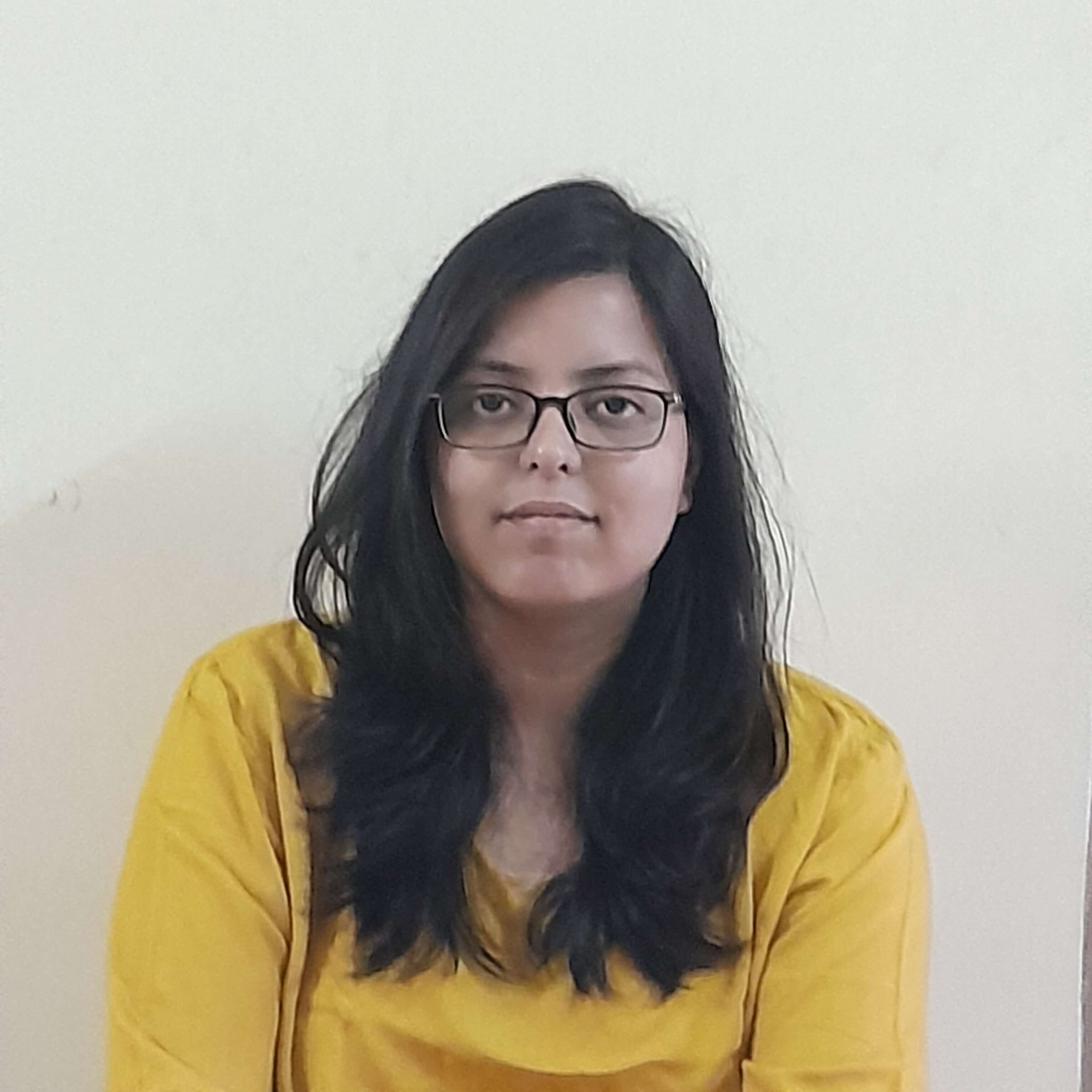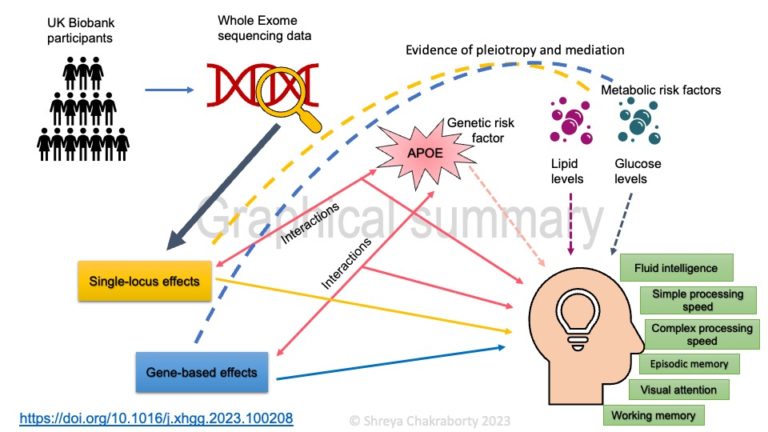Understanding genetic architecture of cognition
Work done in the lab of Dr. Bratati Kahali at the Centre for Brain Research, IISc Bangalore
Shreya Chakraborty is a joint PhD student between the department of Interdisciplinary Mathematical Sciences (Institute Mathematics Initiative programme ) and the Centre for Brain Research, IISc Bangalore. She has completed her Master’s in Statistics from the University of Calcutta. Her research involves identifying genetic loci associated with manifestations of neurodegenerative diseases in humans using statistical methods on large-scale genetic data from population-based samples accounting for age-associated metabolic risks.

Author Interview
How would you explain your research outcomes to the non-scientific community?
My research broadly identifies locations within genes and nearby regions in our DNA where modification of one or more nucleotide bases (A, T, G, C) can increase or decrease the genetic predisposition of a person to several aspects of cognitive functioning which involve a range of mental processes. Cognitive functioning is complex and heritable. The positions that we have uncovered have some single-handed contributions, some loci have a collective burden, some have coupled effects upon interaction with known loci which are known to pose an increased risk for neurodegeneration, and some have evidence of mediating effects via their effects on lipid and glycemia-related traits (collectively metabolic traits).

“The findings substantially add to the set of potential areas in the DNA of humans, which can be targeted to decrease the susceptibility of accelerated cognitive decline in ageing individuals.”
How do these findings contribute to your research area?
The findings substantially add to the set of potential areas in the DNA of humans, which can be targeted to decrease the susceptibility of accelerated cognitive decline in ageing individuals. The research topic I am working on is a high-priority public health issue because the cognitively-impaired ageing population exerts a substantial socio-economic burden. Since filling pre-existing gaps within preliminary data lays a crucial foundation for future solutions, firstly, we need to understand the genetics of cognitive functioning in cognitively normal individuals with co-occurring metabolic risks that accelerate impairment to unravel the genetic basis of predisposition to cognitive decline. Thus my work, in part, potentially provides further incentive and backing to contribute to healthy cognitive functioning necessary to carry out day-to-day tasks.
What was the exciting moment during your research?
Like every researcher, we formulated our hypotheses based on preliminary data and proceeded methodically to test them. We were excited to see all our novel discoveries correlating genetics with cognition using large-scale computational approaches. We were delighted that our results from this large-scale study, conducted in a hypothesis-free manner, also pointed to the same genes and genetic regions that had remained elusive or were known from targeted experimental studies but could not be replicated. Almost all of our results were backed up with existing evidence of their roles in processes at the neuronal connection level that brings about normal cognitive functioning. These observations were very reassuring because they form the basis of future studies in understanding cognition in healthy and impaired conditions.
What do you hope to do next?
My work so far has involved establishing associations between genetic variants implied in cognitive functioning. But do they cause changes in cognitive functioning, or do they simply tag along functional locations by virtue of the structure of our genome? This is something I would like to dig deeper into. Thus, my immediate steps will aim to establish causalities between the implicated variants and cognitive phenotypes, and the pathways involved.
Where do you seek scientific inspiration from?
I seek inspiration from research outcomes that have revolutionized the world. I draw inspiration from scientists all around the globe who work in multiple fields, especially in healthcare. I have always believed in the fact that one idea has the potential to bring constructive changes in society. When the world was struck with Covid, the vaccines that came as a boon were devised by scientists worldwide, who worked tirelessly to develop them. Recently, the automation and artificial intelligence boom has resulted in the deployment of tools in multiple spheres. Such discoveries come with its own set of challenges. As a Ph.D. student, I know how time-consuming experiments are, and to add to the misery, experiments fail. Despite everything, scientists have been resilient, bearing fruits for the world. I find this very inspiring.
How do you intend to help Indian science improve?
I intend to carry out my research properly and publish in reputed journals having broader reach, so that I can do my bit to get Indian science recognized further and kindle the interest of students, scientists, industries, and philanthropists to promote Indian academia in relevant fields. Apart from that, I intend to participate in outreach activities and spread awareness about opportunities and collaborations that currently exist, so that students and budding researchers learn more about Indian science and become willing to take science forward.
Reference: Shreya Chakraborty, Bratati Kahali, Exome-wide analysis reveals role of LRP1 and additional novel loci in cognition, Human Genetics and Genomics Advances, Volume 4, Issue 3, 2023, 100208, ISSN 2666-2477,
https://doi.org/10.1016/j.xhgg.2023.100208
Edited by: Nivedita Kamath
Biopatrika: Bringing Science to Society
© Biopatrika 2023 All Rights Reserved.